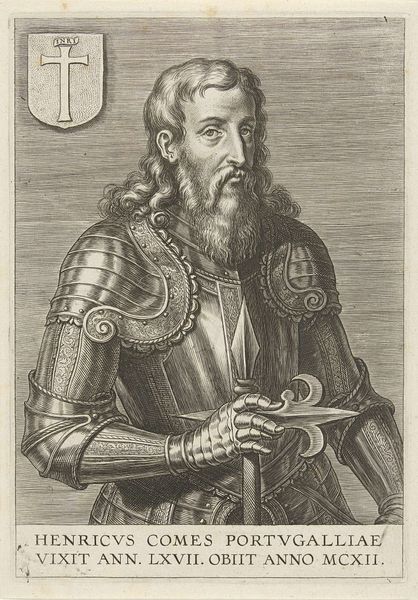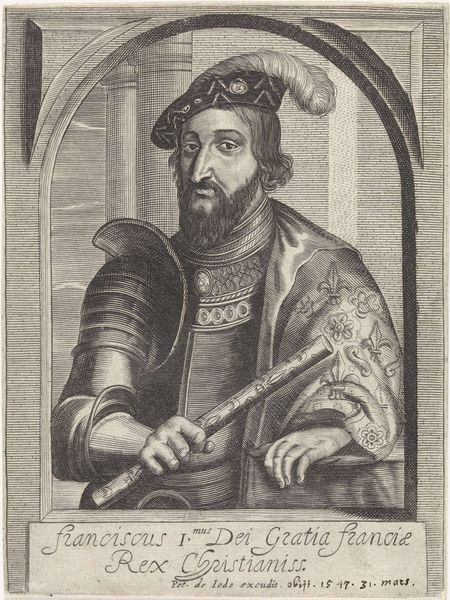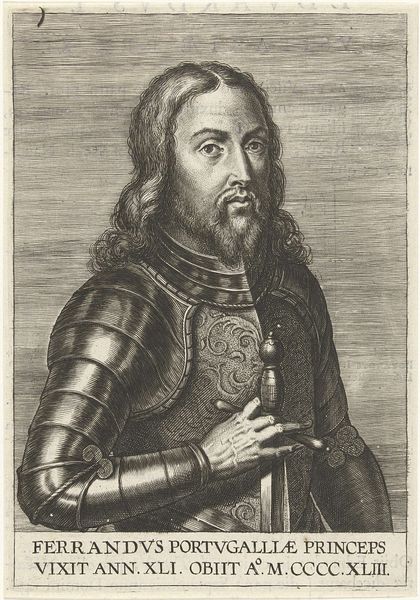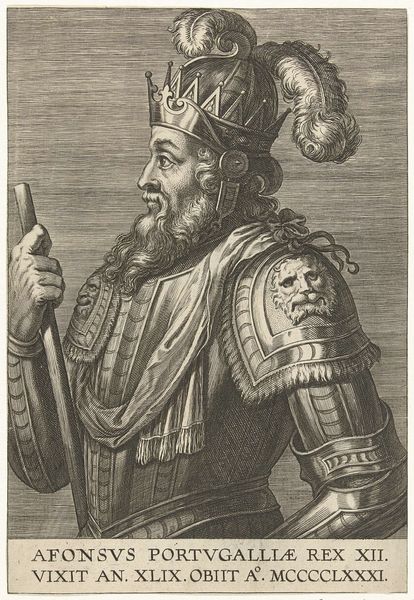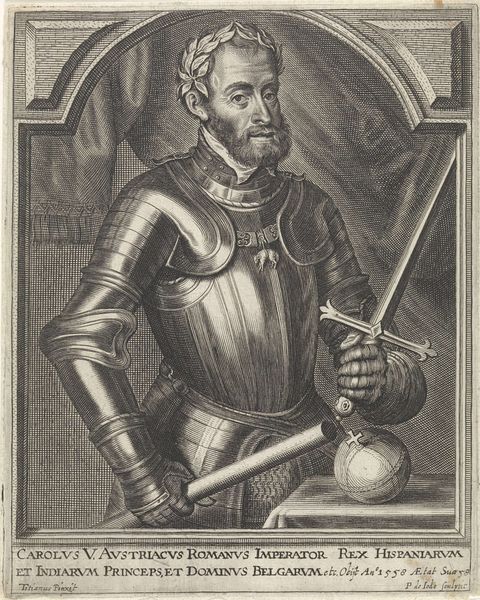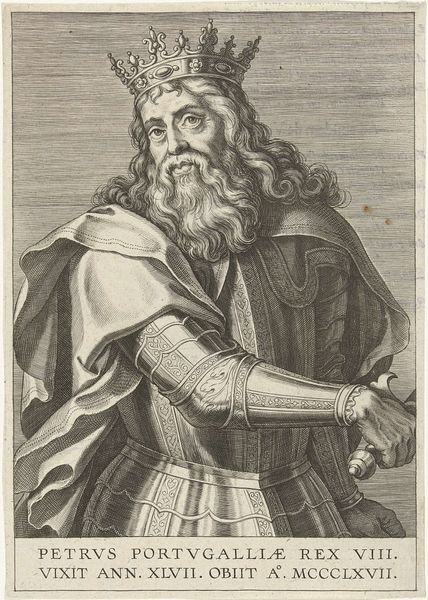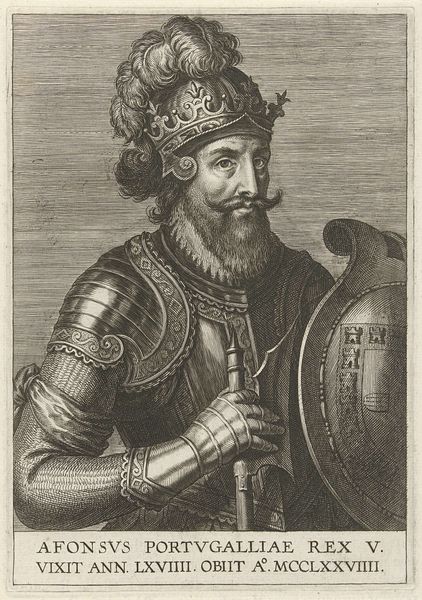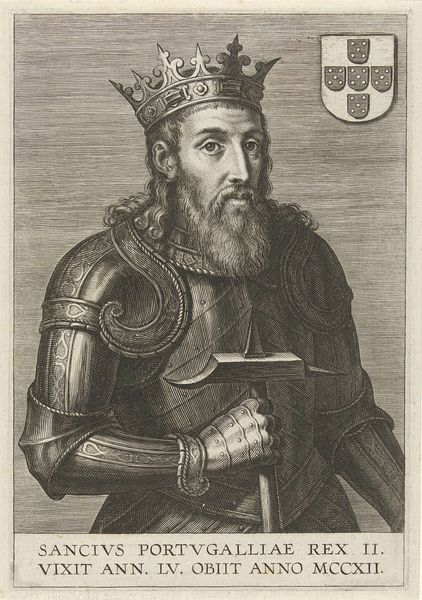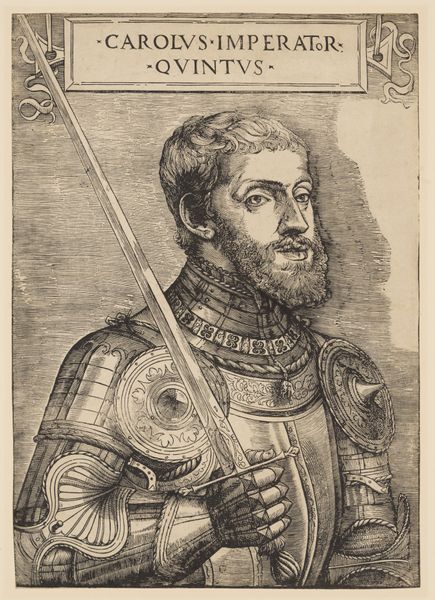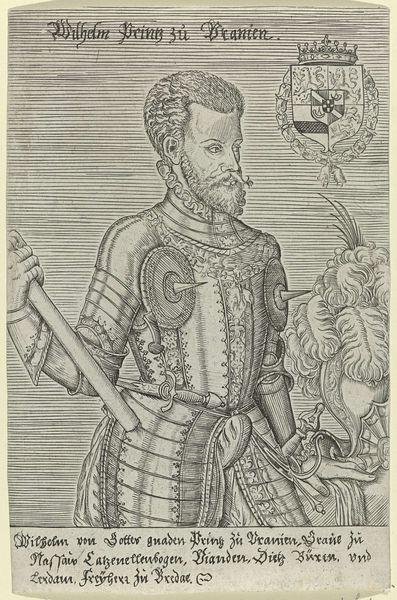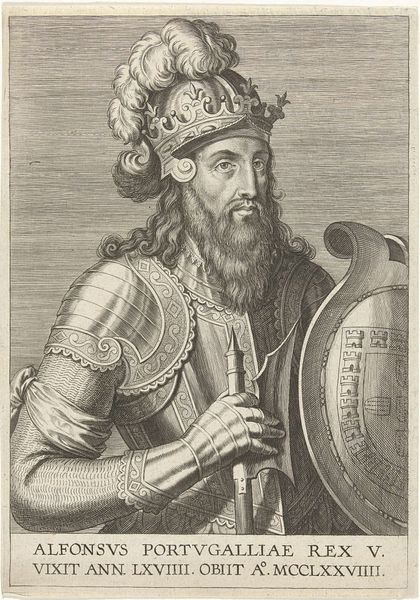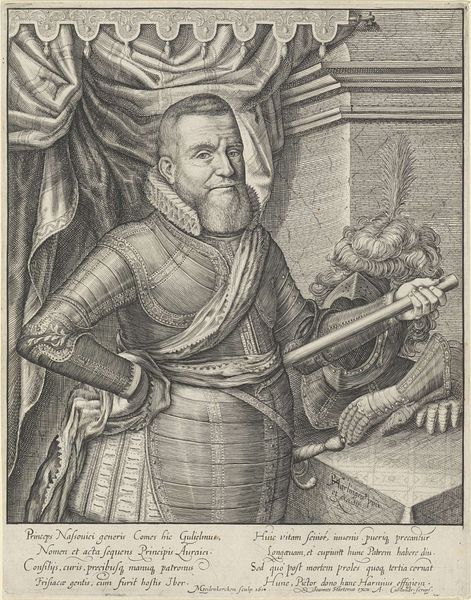
metal, engraving
#
portrait
#
baroque
#
metal
#
old engraving style
#
caricature
#
history-painting
#
engraving
Dimensions: height 190 mm, width 132 mm
Copyright: Rijks Museum: Open Domain
Editor: So, this engraving from after 1621 by Cornelis Galle I, “Portret van koning Alfons IV van Portugal”, renders the king in striking detail in metal. The texture and weight conveyed are quite impressive, almost imposing. I wonder though, how much does it reflect reality, and how much is political statement? What can you tell me about this work? Curator: That's a brilliant question! Images like these served a critical function in shaping historical narratives and cementing power. Think about it – a king's portrait wasn't just a likeness. It projected an image, a carefully crafted symbol. Editor: So, how would an image like this circulate, and who was the intended audience? Curator: These engravings were often reproduced and distributed widely. Consider the historical context: Portugal was rebuilding its empire in the early 17th century after the Iberian Union. Visual assertions of power and historical lineage, like this one, served as crucial propaganda to rally support. This portrait not only emphasizes the king's authority through regalia and armour but also situates him within a continuum of Portuguese monarchs, reminding viewers of national pride. Is this representation truthful? Probably not. It shows how the ruling elites wanted to be seen, to preserve the old ways, when Portuguese power on the continent was fading away. Editor: That makes total sense. The image isn't just *of* the king, but *for* a very specific purpose, for shaping national identity. Curator: Exactly! These images actively participated in constructing historical memory. This teaches us to consider these as not neutral documents, but tools employed within specific political and cultural contexts. I’m curious: Do you look at images of leaders in a different light now? Editor: I certainly do. Thinking about this, I’m far more aware of the image as something crafted to influence. Thanks for opening my eyes to that! Curator: It's my pleasure. Art history at its best asks us to critically examine not just *what* we see, but *why* and *how* it was created.
Comments
No comments
Be the first to comment and join the conversation on the ultimate creative platform.
